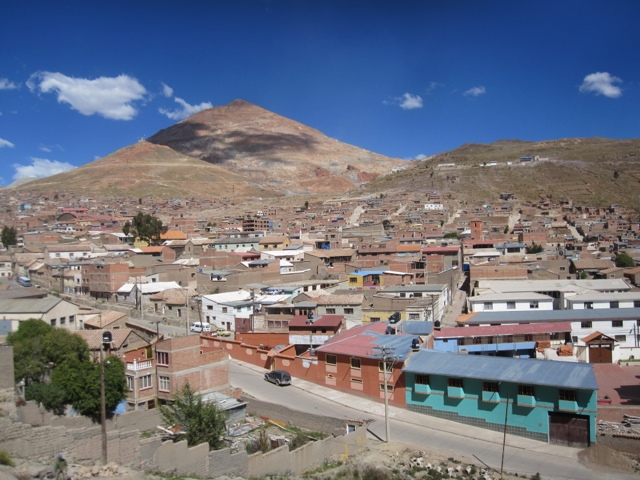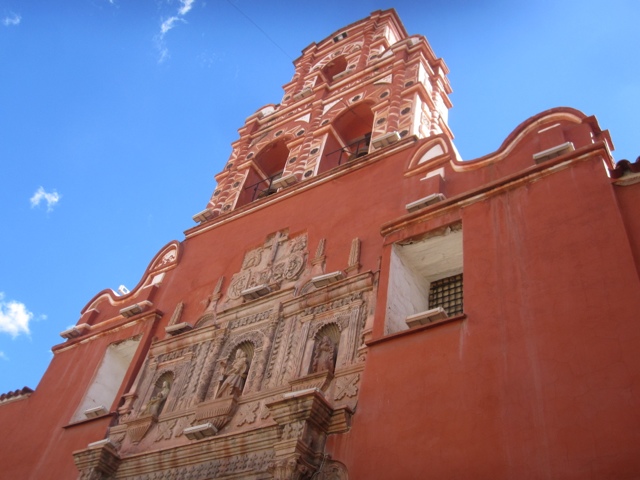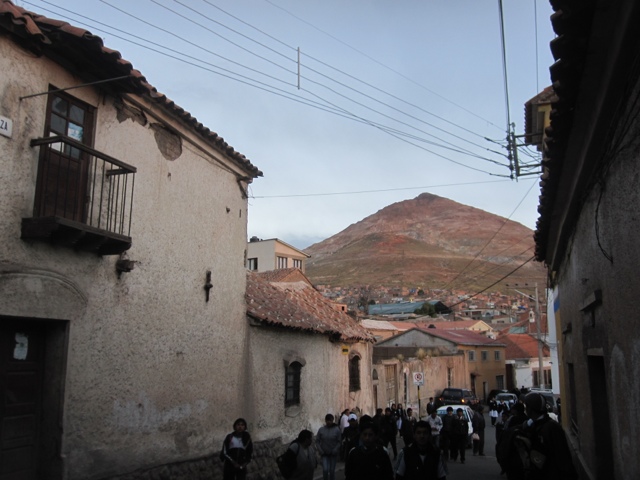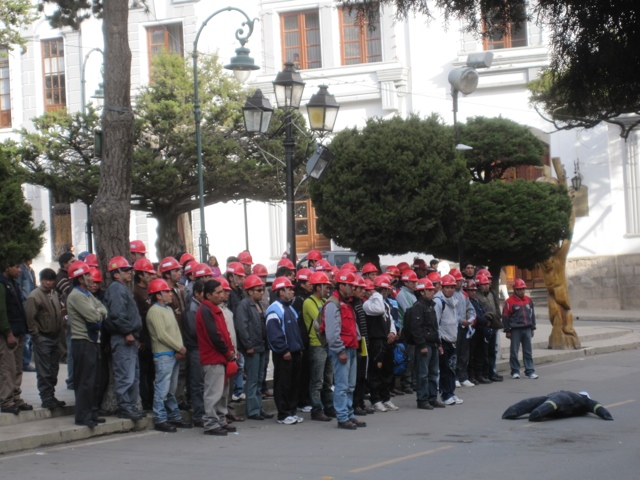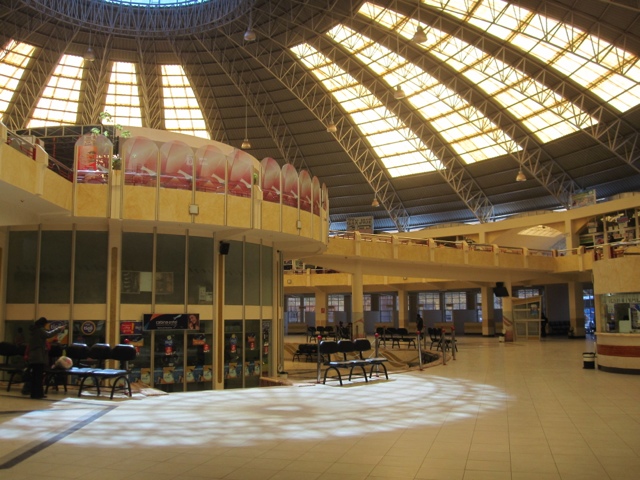At just over 4000m, Potosí bills itself as the world’s highest city. It’s a place that’s apt as the symbol of Bolivia – Cerro Rico, the mountain that towers over the town is on the Bolivian national crest, and its tale of mining – past and present – tells some of Bolivia’s story.
The high altitude Bolivian Altiplano is hugely rich in minerals – something we saw on our tour of the south west, but also evident from the country’s transport infrastructure – the railways were constructed to carry mining exports out to the coast, and much of the better road network is based on the needs of mineral trucks. As the locals will tell you, Bolivia was once much larger than it is today, with huge natural resources – but poor political and military strategy meant that it progressively lost land to Brazil, Argentina, and finally Chile – in a move that crucially lost its costal access and made it landlocked. As you can imagine, it’s pretty difficult and expensive for a landlocked country to export large quantities of minerals, and despite some trade agreements, this remains a significant national issue.
While the geology tells Bolivia’s economic story, it is the mines themselves which paint the human picture. Cerro Rico is the huge muddy-brown slump that overlooks Potosí, and for 500 years it was famous for its rich seam of silver. Much of the colonial beauty of the city below was built on this wealth, with the (probably false) tale that even horses were shod with silver, such was the abundance of the stuff relative to iron! However, it is the human cost of this wealth that is the real story. It is thought that some eight million miners have died in or around this mountain over the 500 years it has been mined. Just stop for a minute to take that in – that’s the entire population of London on just one mountain, or 43 deaths every single day since the mines opened half a millennia ago. It’s so horrific a number I’m not sure whether to believe it or not, but we’ve seen it sourced with authority in many places around here.
This human tragedy is sadly not just confined to the past – even though what’s left in Cerro Rico is only low-grade, thousands still work in the mines, including hundreds of children, mainly using just manual tools and dynamite to eek out a living in appalling conditions that mean many die of silicosis before the age of 40. We watched the shocking film ‘The Devil’s Miner’, which follows the life of two brothers working in the mines aged 12 and 14, and shows how miners have adopted the religion of ‘El Tio’ – the Devil – to protect them underground, where they believe the Catholicism they practice up above cannot penetrate. It’s a chilling exposition of what children – and adults – go through even in modern-day Bolivia to earn enough to live.
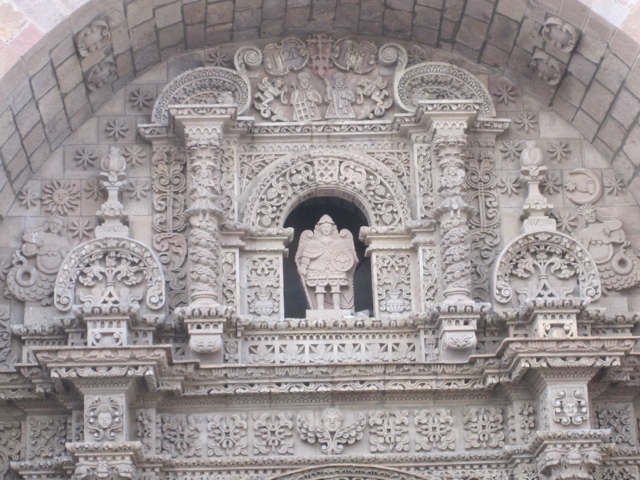
San Lorenzo Church, with the unusual depiction of sun and moon on the left and right, alongside traditional Christian symbols.
The poverty, dirt and death of the mines contrasts sickeningly with the wealth of the city, where the silver made it the centre of South American money production under Spanish colonial rule. We visited a fascinating convent which was home to 21 young women, the second daughters from rich families who were compelled to devote their lives to God. The convent required families to contribute the equivalent of 2000 gold coins when they joined, and much of it remains today in the form of paintings and huge art pieces laden with silver. I don’t think I’ve ever seen quite so much silverware and opulence in one place – and all this effectively gained by the church in exchange for lives of the poor in the mines.
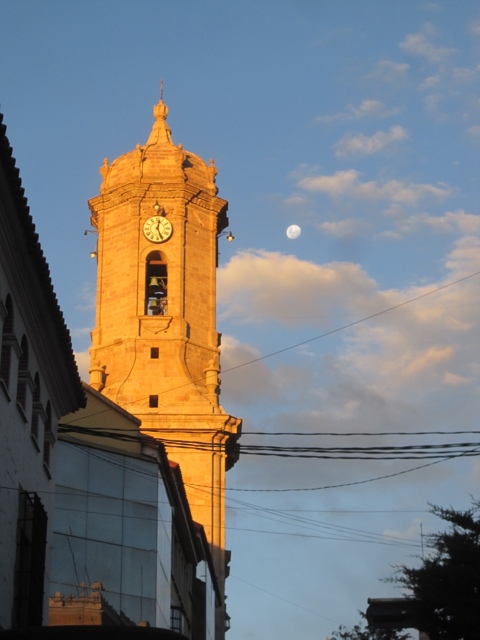
While in the city, we got our first taste of Bolivian protests – miners were marching through the centre campaigning for better rights. What makes these a little more exciting than protests back home is the use of dynamite, with people covering their ears and explosions going off every few minutes. While loud, it was fairly safe – like big fireworks – but we heard that in La Paz, miners had actually dynamited a police roadblock blocking the route of their march!
While leaving Potosí for the serene climes of Sucre, we passed through the modern bus station, a huge dome-shaped building with incredible acoustics inside. Women working for the bus companies shout out destinations to advertise tickets, and with these repeatedly echoing off the walls, it was a surreal and ghostly experience – perhaps reminiscent of the call to prayer in mosques we heard in Asia, or, with enough imagination, a heartfelt wailing for all those millions of lives lost on the Devil’s mountain up above.
Simon

